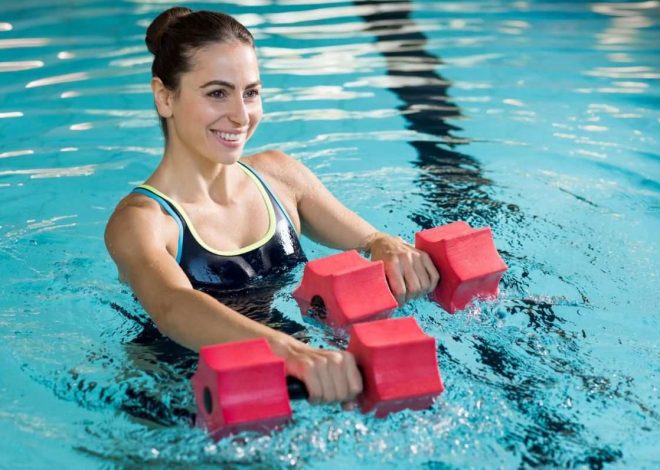
Maximizing Gains and Minimizing Risks: The Orthopedic Approach to Fitness Enthusiasts
In the pursuit of fitness goals, enthusiasts often encounter a paradox: how to maximize gains without risking injury. Striking a balance between pushing limits and safeguarding one’s body is paramount.
Fortunately, an orthopedic approach to fitness offers valuable insights, integrating biomechanics, injury prevention, and optimal performance strategies.
In this article, we delve into the principles of this approach, guiding fitness enthusiasts towards sustainable progress while mitigating the risks of orthopedic injuries.
Orthopedic Fitness Approach

In orthopedic fitness, meticulous attention to proper form and technique is paramount for minimizing injury risk and maximizing efficiency.
With an emphasis on individualized training programs and comprehensive assessments, orthopedic experts prioritize safety and optimization in every fitness journey.
An Emphasis on Form and Technique
Central to the orthopedic approach endorsed by TopDoc specialists is a meticulous focus on form and technique. Prioritizing proper form in foundational movements like squats, deadlifts, and overhead presses not only maximizes muscle engagement but also minimizes the risk of overuse injuries, ensuring a safer and more effective fitness journey.
Individualized Training Programs
Orthopedic experts recognize the importance of tailoring training programs to individual needs and capacities. Everybody is unique, with distinct strengths, weaknesses, and injury histories.
By conducting comprehensive assessments, orthopedic professionals can identify potential risk factors and design personalized workout regimens.
This proactive approach minimizes the likelihood of exacerbating pre-existing conditions and empowers enthusiasts to optimize their fitness journey safely.
Incorporating Cross-Training and Recovery
Orthopedic fitness strategies extend beyond the gym floor. Cross-training, which involves varying workouts to target different muscle groups and movement patterns, is integral to preventing overuse injuries and enhancing overall performance.
Additionally, prioritizing recovery is non-negotiable. Adequate rest, nutrition, and recovery modalities such as foam rolling and mobility drills facilitate tissue repair and mitigate the cumulative stress of intense training sessions.
Common Orthopedic Concerns in Fitness

In fitness training, addressing joint mobility, spinal alignment, and tendon integrity are essential for injury prevention and long-term function.
Orthopedic principles guide strategies to strengthen and support these crucial aspects of musculoskeletal health. By incorporating targeted exercises and proper techniques, individuals can optimize their training regimens and promote longevity in their fitness pursuits.
Joint Health and Mobility
Joint health is a cornerstone of orthopedic fitness. Maintaining optimal joint mobility and stability is crucial for preventing injuries and preserving long-term function.
Incorporating dynamic warm-up routines and mobility exercises primes the body for physical activity while reducing the risk of strain or sprain.
Furthermore, targeted strength training exercises, such as those targeting the rotator cuff or gluteal muscles, fortify the surrounding structures, promoting joint integrity and resilience.
Spinal Alignment and Core Stability
The spine serves as the body’s central support structure, making spinal alignment and core stability paramount for overall orthopedic health.
Poor posture and inadequate core strength can predispose individuals to back pain and spinal injuries. Through exercises that target the core musculature—such as planks, bird-dogs, and Russian twists—fitness enthusiasts can cultivate a strong and stable core, safeguarding against injury and enhancing athletic performance.
Tendon and Ligament Integrity
Tendons and ligaments play a crucial role in transmitting forces and stabilizing joints during physical activity. However, they are also susceptible to overuse and strain injuries, particularly with repetitive movements or sudden changes in intensity.
To mitigate these risks, orthopedic-informed training emphasizes gradual progression, proper warm-up protocols, and targeted strengthening exercises.
Eccentric training, which involves controlled lengthening of muscles under load, can effectively bolster tendon resilience and mitigate the risk of tendonopathies.
Implementing Orthopedic Principles in Training

Understanding orthopedic principles in training is crucial for optimizing performance and minimizing the risk of overuse injuries.
By emphasizing gradual progression, periodization, and vigilant monitoring, fitness enthusiasts can achieve sustainable progress and maintain long-term orthopedic health.
Gradual Progression and Periodization
Orthopedic fitness programming prioritizes gradual progression and periodization to optimize performance while minimizing the risk of overuse injuries.
Periodization involves systematically varying training volume and intensity over designated periods, allowing for adequate recovery and adaptation.
By incorporating deload weeks, active recovery sessions, and strategic adjustments based on individual responses, fitness enthusiasts can sustainably progress towards their goals without compromising orthopedic health.
Monitoring and Adjusting
Continuous monitoring of training variables and biomechanical cues is essential for mitigating orthopedic risks. Orthopedic specialists advocate for maintaining a keen awareness of warning signs such as persistent pain, discomfort, or biomechanical imbalances.
Regular assessments, whether through movement screenings or biomechanical analyses, enable enthusiasts to identify potential red flags and make timely adjustments to their training protocols, fostering long-term orthopedic resilience and performance gains.
Conclusion
The pursuit of fitness is a journey marked by triumphs and challenges, but prioritizing orthopedic health can ensure that enthusiasts thrive in the long run.
By embracing the principles of the orthopedic approach—emphasizing form and technique, individualizing training programs, and addressing common orthopedic concerns—fitness enthusiasts can maximize gains while minimizing the risk of injuries.
Through a holistic commitment to balanced training, recovery, and proactive injury prevention strategies, enthusiasts can unlock their full potential and enjoy a lifetime of sustainable fitness pursuits.



